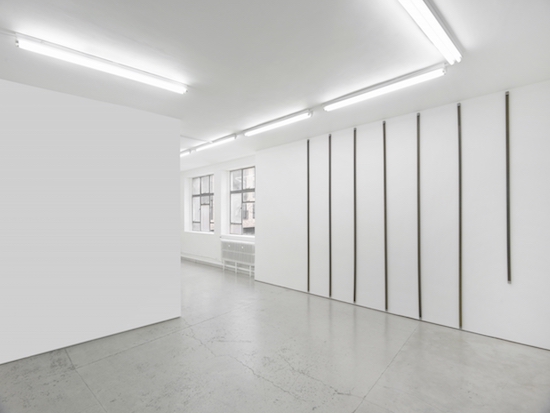The Raid is a 101 minute long silat [Indonesian martial arts] film, directed by Welsh film-maker Gareth Evans for a production budget of just over a million dollars. It concerns a police swat team raid on a high-rise block occupied entirely by hardened criminals, protecting, at its very heart, the big boss baddy, crime lord Tama Riyadi. Though dismissed by Roger Ebert at the time of its release as no more than "senseless carnage" designed to appeal solely to the "brain’s reptilian complex", the film has nonetheless been highly praised by fans and (other) critics alike for its high octane thrills and strong production values, winning prestigious awards at the Toronto International Film Festival, Amsterdam Fantastic Film Festival, and Dublin International Film Festival.
But what has been picked up and commented on most conspicuously in the film’s overall critical appraisal is not so much its actors’ performances or the visual style of the cinematography; but rather, the film’s speed. "The emphasis here is speed," writes Noel Murray, for the A/V Club, "The fight choreography is blisteringly quick, designed to make viewers gasp, and then cheer."The Guardian‘s Philip French commented on the film’s "fast-cutting" and "rapid camera movements". And Film Comment’s Grady Hendrix alludes to the film’s "speed" no less than three times in two paragraphs. Here is a film which evidently draws its audience attention to its use of time, the way it takes up time – or abolishes it.
But if Evans’ brutalist beat ‘em up might feel to viewers like it passes in a flash; how would it feel to apprehend the whole film, its entire length, in an instant?
The first thing you will encounter upon entering Elizabeth McAlpine’s present solo exhibition, Light Reading, at the Laura Bartlett Gallery in Bethnal Green, beyond the white walls and the neon lights, is a set of seven parallel black bars on the wall. Framed in a steel casing which raises them off the wall by two centimetres, the bars contain strips of 35mm film, three metres down over the first six bars, with the last not quite matching at only 2.1 metres.
From a distance, the plastic strip looks inky black throughout. Critics have complained about the samey, one-dimensional tone of Evans’ film. And this – or so the title would have us believe – is Evans’ film. The sculpture is called The Raid (101 Minute), (2014). It promises, at least, an experience of the film even faster than the film itself. Look closely, catch the light reflected on the gelatin emulsion surface from the strip lights on the ceiling, and you can just about start to make out variegation in the patterns of light and dark imprinted on the film.
But The Raid (101 Minute), (2014), is not really a work about Gareth Evans’ film per se. You will learn nothing from this sculpture about the film’s narrative structure, its diegesis, or its characterisation. It is a work about film as a unit of time, as time always-already rendered as space, about film as physical material and objective fact. This is a work about film, in Marshall McLuhan’s terms as “a spectacular wedding of the old mechanical technology and the new electric world”, as the “total realization of the medieval idea of change”, as “mighty limb of the industrial giant.” The medium is the message.
Light Reading is McAlpine’s seventh solo show at Laura Bartlett since her 2005 debut Time Spent Doing Things Backwards. Since then her work has been notable for its concern with technologies of representation through inscription, the direct impression of one material upon another, whether through the casting of surfaces, Ernst-ian frottage, or pinhole photography. In each case it has been the material interaction between different surfaces, reality as something that impinges immediately upon a medium – and, of course, the impurities and unforced errors that inevitably enter into any such process – that have remained the focus of her work.
Light Reading (California Sunset) (2007–2014) is a three-minute long looped film, occupying one whole room in the exhibition. At first glance, it resembles almost such structural films of the 1960s as Tony Conrad’s The Flicker or Stan Brakhage’s Mothlight. Like those works, McAlpine’s film glimmers and flutters in inscrutable patterns, flashing bright colours and abstract shapes at 24 frames per second, without the slightest concern for the illusions of organic movement ordinarily created by cinema’s standard exploitation of the persistence of vision. But in fact, Light Reading (California Sunset) is more accurately regarded as a work of “found footage” cinema – “found footage” that is, not in the sense of ‘downloaded from the Prelinger Archive’, nor in the sense of ‘deliberately shaky cam in order to hoax the appearance of retrieved amateur cinematography’. The imagery which comprises Light Reading (California Sunset) was found in the sense of ‘in the bin’.
This is a work composed of off-cuts from the trailers to countless feature films. We hear bursts of stammered dialogue, music, and foley – never more than a split second – flashes of colour, scrabbling abstract expressionist-like dust particles festering across the screen like amphetamine-charged ant colonies. It recalls, in some ways, a more delirious, psychedelic version of Nam June Paik’s Zen for Film.
Like The Raid (101 Minute), Light Reading (California Sunset) is a work about the materiality of its medium, about film as a surface. If photography has always been a question of writing with light, McAlpine seems here to be seeking new ways to read that script, a new hermeneutics of physical presence.
Elzabeth McAlpine, Light Reading, is at Laura Bartlett Gallery until 14 May 2017


